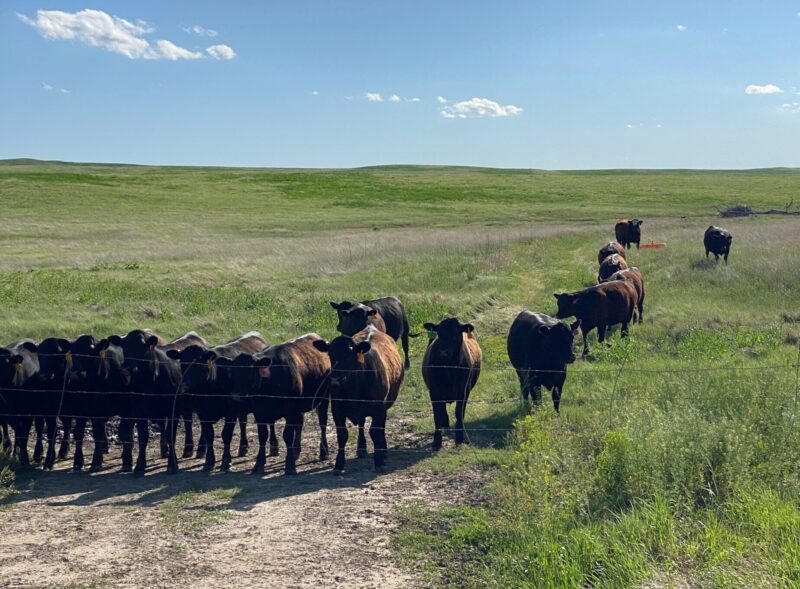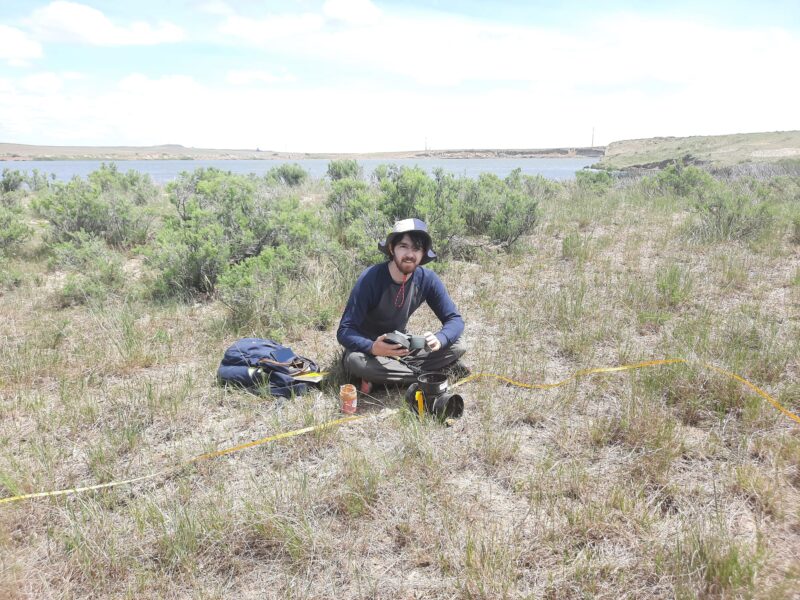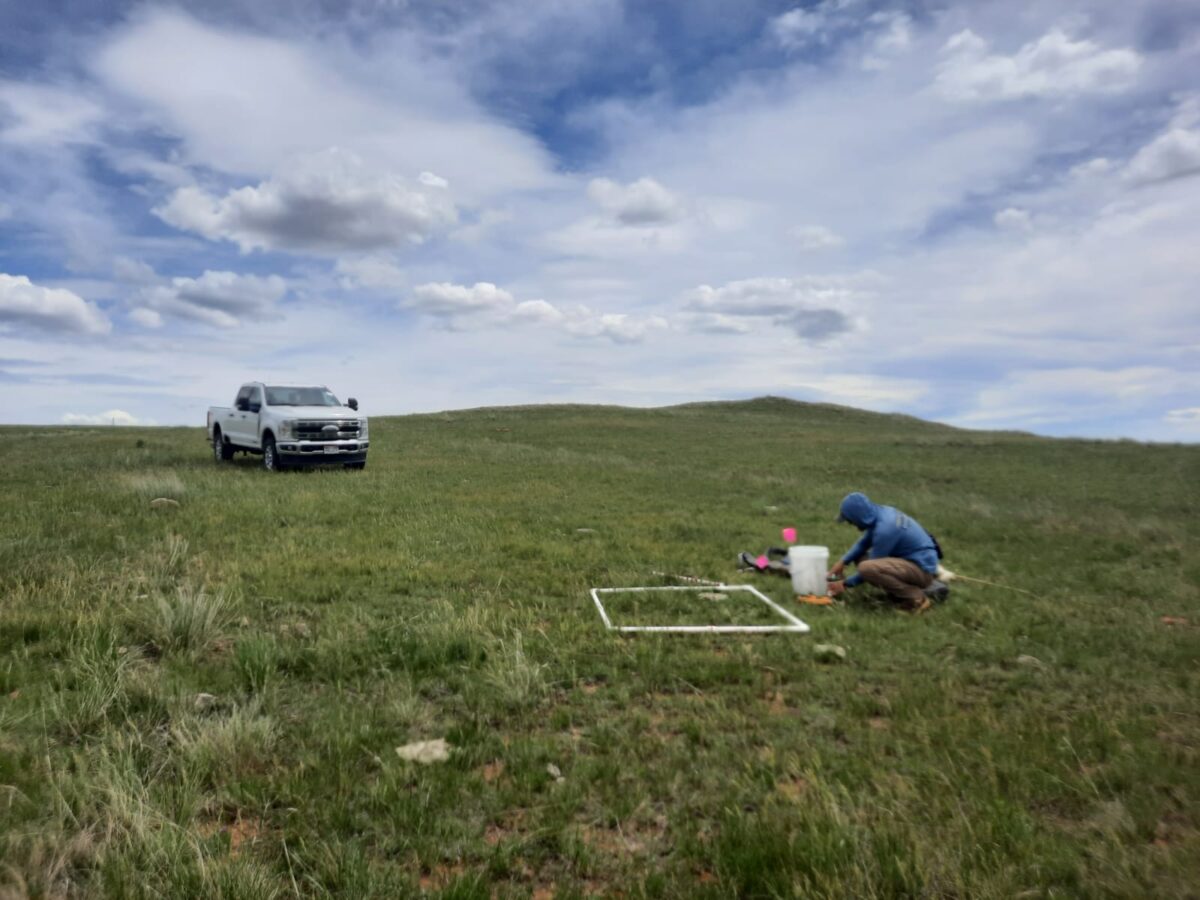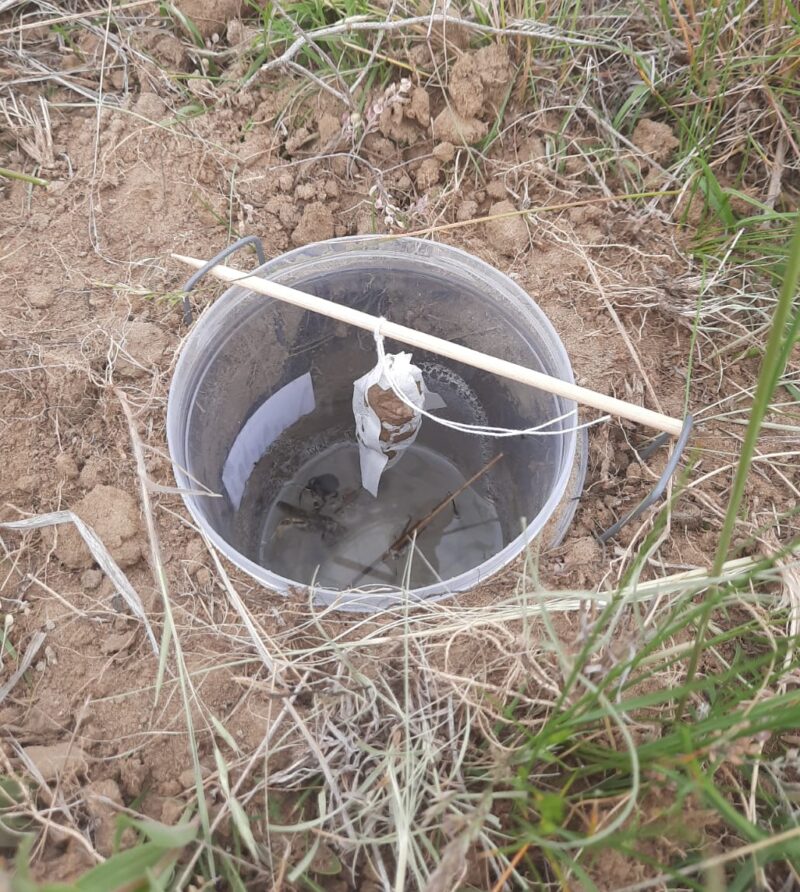South Dakota Biodiversity Surveys
Documenting changes in biodiversity within the Northern Great Plains as related to changes in cattle grazing patterns (2024 to 2028)
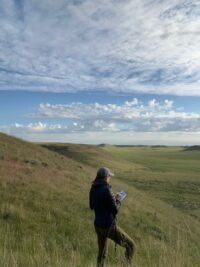 BRI, in partnership with South Dakota State University, the U.S. Department of Agriculture, Turner Bison Exchange, and other private ranches, is starting a new project documenting changes in biodiversity within the Northern Great Plains as related to changes in cattle grazing patterns.
BRI, in partnership with South Dakota State University, the U.S. Department of Agriculture, Turner Bison Exchange, and other private ranches, is starting a new project documenting changes in biodiversity within the Northern Great Plains as related to changes in cattle grazing patterns.
Similar to the work conducted in Kenya, Zambia, and Tanzania, the biodiversity surveys include the quantification of soil carbon, vegetation, invertebrate and wildlife populations to establish baseline conditions that will be used in comparison to replicated surveys conducted in 2027. The future surveys will take place after grazing patterns for cattle have been altered to improve soil carbon sequestration and grassland habitat quality.
In the Field
The BRI team has been busy surveying and measuring the quality and overall quantity of vegetation within the survey areas, deploying game cameras to monitor wildlife activity and abundance in specified areas, and designing and utilizing pitfall traps for dung beetle collection. View photos from in the field below, and check this page for further updates as the field crew continues their survey efforts.
1. Cattle on a ranch near a survey area; 2. Pronghorn; 3. Deploying autonomous recording units (ARUs); 4. A vegetation survey area; 4. Pitfall trap for dung beetles
Photo Credits: Header photo © BRI-Billi Krochuk

